Christian Klinker: A Pioneer German Potter From Bucks County, Pa.
By Justin W. Thomas - May 27, 2022
There are very few surviving red earthenware jars from Pennsylvania that can be accurately attributed to the 18th century. Forms and styles that were popular then changed, and time was not kind to the form. Production was also intertwined in both the late 18th and early 19th centuries based on fashion, religion, immigration, apprenticeship and multiple generations of family members employed in the same potting craft, among other reasons. The information known about 18th-century Pennsylvania potters is also vastly limited when compared to their 19th-century counterparts. However, an 18th-century multicolor slip decorated red earthenware jar with two crimped handles sold on May 21, 1973, at Pennypacker Auction Center in Reading, Pa., as part of the Walter G. Himmelreich (1905-93) collection. Himmelreich noted in the auction catalog, This pot is a very fine decorative piece and has been one of my pride and joy antiques for many years. Himmelreich was a well-known dealer and collector in Lancaster County, Pa. The jar brought $1,500. This jar was later attributed to Christian Klinker (d. 1798), a pioneer German immigrant potter living and working in Nockamixon Township, Bucks County, Pa., ca. 1773-98. The jar was bought by Robesonia, Pa., antiques dealer Greg Kramer at the John Gordon Collection of Folk Americana at Christies in New York City in 1999, and, more recently, it sold again at Crocker Farm in Sparks, Md., on Aug. 7, 2021. The basis for the attribution for this piece is a result of another jar at the Philadelphia Museum of Art and attributed to Klinker, inscribed in slip with the year 1787. The 7-inch-high jar was cataloged as possibly Yadkin Valley, N.C., 19th century, in the Gordon catalog, and brought $4,370. It sold for $132,000 to a Pennsylvania collector at the Crocker Farm sale. Another similar jar with identical handles sold for $13,800 in 1994 at the George Scott sale through Christies. And another also with identical handles and dated in slip 1790 sold for $56,400 in 2004 through Freemans. According to Edwin Atlee Barbers (1851-1916) 1903 book, Tulip Ware of the Pennsylvania-German Potters: An Historical Sketch of the Art of Slip-Decoration in the United States, One of the pioneer potters of Bucks County, Pa., was Christian Klinker, who is supposed to have come from Germany. An earthenware jar in the collection of the Pennsylvania Museum (now the Philadelphia Museum of Art), covered with colored slips in raised floral designs, bears on the bottom his initials, C.K., and the date of fabrication, 1773. According to an old deed formerly in possession of the late William J. Buck, of Jenkintown, Pa., Christian Klinker was an earthen potter maker in 1792, near Bucksville, in the same county, where he had resided for at least five years previous to that date. The museums jar also serves as evidence documenting Klinker as a potter in Bucks County, as early as 1773. It is also because of these pieces at the Philadelphia Museum of Art, along with a few others retaining strong histories of ownership, that an interpretation can be made with how some of Klinkers production appeared in the late 1700s, seeing there is not much archaeological evidence from his production in existence, which is possibly a result of some of his property being sold in 1792. About Christian Klinker The history of Christian Klinkers migration to America is not well documented, although it is known that he was producing red earthenware in Upper Bucks County as early as 1773, located to the north of Philadelphia, along the Pennsylvania/New Jersey border. The potters who flourished in Bucks County from 1770 to 1830 were known for their elaborate use of slip decoration, often utilizing upwards of four different colors; they were also known for sgraffito decorated wares, a technique that was created by applying a preliminary surface color, covering it with another color, and then scratching the top layer in such a way that the emerging decoration revealed the contrasting lower color. Among the forms manufactured in Bucks County in the 18th and 19th century are sgraffito decorated plates, as well as slip decorated plates and platters, various shaped jars (some with reticulated cutouts), flower vases, bottles, bowls, flowerpots, mugs, among other forms, including whimsical objects. It is apparent that Klinker was as prolific with his use of slip decoration as any potter working in Bucks County. This statement can be interpreted based on the surviving objects attributed to Klinker owned by art museums such as the Philadelphia Museum of Art and the Metropolitan Museum of Art in New York City. Furthermore, it was published in the Bucks County Historical Societys 1897 book, Tools of the Nation Maker: A Descriptive Catalogue of Objects in the Museum of the Historical Society of Bucks County, Pennsylvania, Bucks county potters like Christian Klinker, Philip Kline and the Headmans before 1825, could tone the glaze in warm shades of brown, yellow, green and orange, and painted upon the unbaked wares by means of an earthen cup tapped by a quill. Its contents was the slip or clay paste of consistency like molasses, and productive of the green, yellow, black and white colors used in the varied designs. Nockamixon Township was founded in 1742, Klinker was a large landholder in the area. It was published by American journalist William Watts Hart Davis (1820-1910) 1876 book, The History of Bucks County, Pennsylvania, Nicholas Buck (1767-1829), the founder of Bucksville, was the third son of Nicholas Buck (1730-1786), of Springfield, where he was born the 20th of March, 1767. He married Mary (1769-1857), the daughter of John Eck (1721-1809), of Upper Salford, Montgomery County, and in the fall of 1792 he purchased of Christian Klinker sixty-four acres on the Durham Road, in Nockamixon, the site of Bucksville. Here he erected a dwelling, wheelwright and blacksmith-shops, and made other improvements. He built a tavern-house, sign of the White Horse, in 1808, licensed the following year, and opened a store in 1818. Some noted characteristics of Klinkers production, based on extant examples, include thin or refined construction with a raised lid rim flange that is glazed, unlike other styles of this form made in Pennsylvania, where the rim flange is intentionally left unglazed. Many of the pots are also decorated with the same light orange lead glaze, which the decorative slip is applied. Among the wares known today that are like Klinkers production is a slip decorated pot that sold in a group lot at Nye & Company in Bloomfield, N.J., in 2018. The pot was included in the collection of Robert Weeks (1848-1931) and Emily Johnston De Forest (1851-1942), which had descended in the De Forest family. Robert Weeks wore many professional hats during his lifetime, but he is most remembered today for being named president of the Metropolitan Museum of Art in 1913. In this role, the Forests amassed a major collection of American decorative arts, which they largely donated to the Met in 1922, in order to establish the American Wing. But not every object they collected was given to the Met, some of which had descended in their estate until 2018. Nonetheless, Christian Klinkers efforts as one of the pioneering potters in Bucks County helped spark one of the countrys most prolific areas of red earthenware production. Based on the few known examples of Klinkers production that survive today, notably jars, it can be gathered that the slip decorated wares he produced were some of the most colorful wares made anywhere in America in the last quarter of the 1700s. The foundation that he helped establish in the 1700s continued with how red earthenware was produced in Bucks County in the 19th century, where this industry flourished, and it is regarded today as one of the most important areas for historic red earthenware production in the country. Sources Barber, Edwin Atlee. Tulip Ware of the Pennsylvania-German Potters. University of Michigan, 1903. Buck County, Penn. Historical Society. Tools of the Nation Maker: A Descriptive Catalogue of Objects in the Museum of the Historical Society of Bucks County, Pennsylvania. Bucks County, PA, 1897. Davis, William Watts Hart. The History of Bucks County, Pennsylvania. Doylestown, PA: Democrat Book and Job Office Print, 1876. Hollander, Stacy C. American Radiance: The Ralph Esmerian Gift to the American Folk-Art Museum. New York: Harry N. Abrams, 2001.


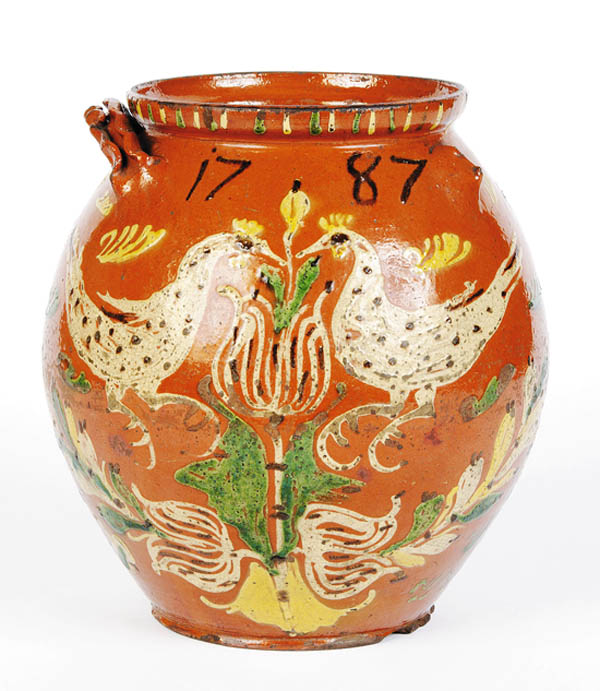

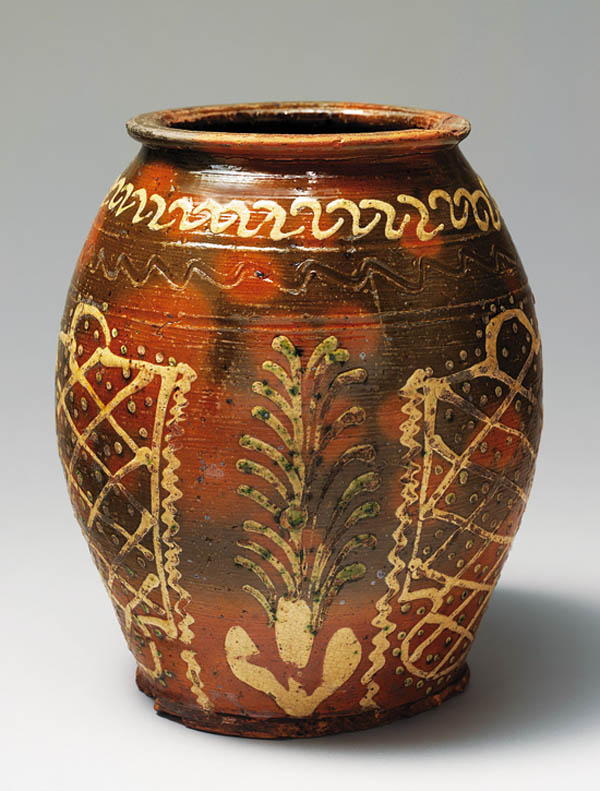

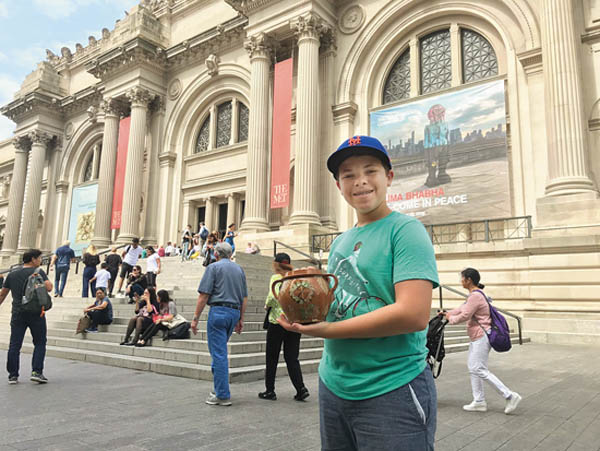
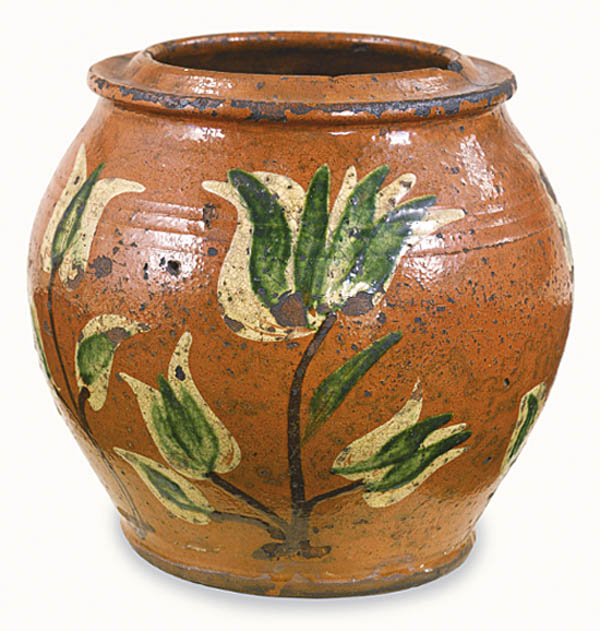

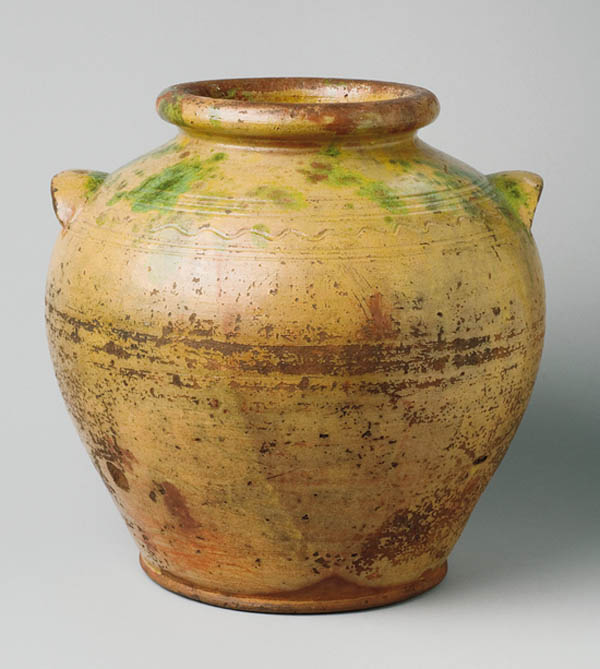
SHARE
PRINT